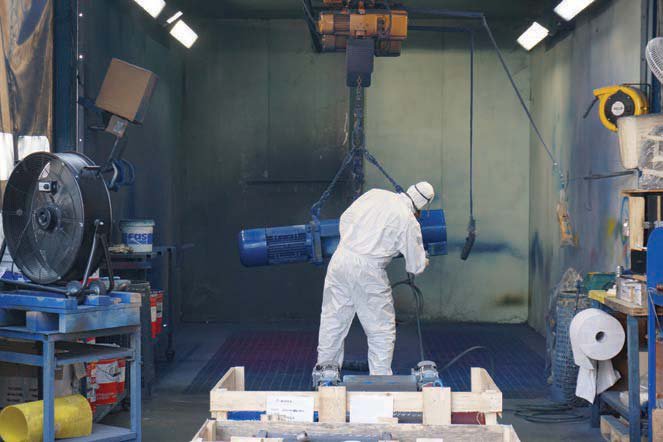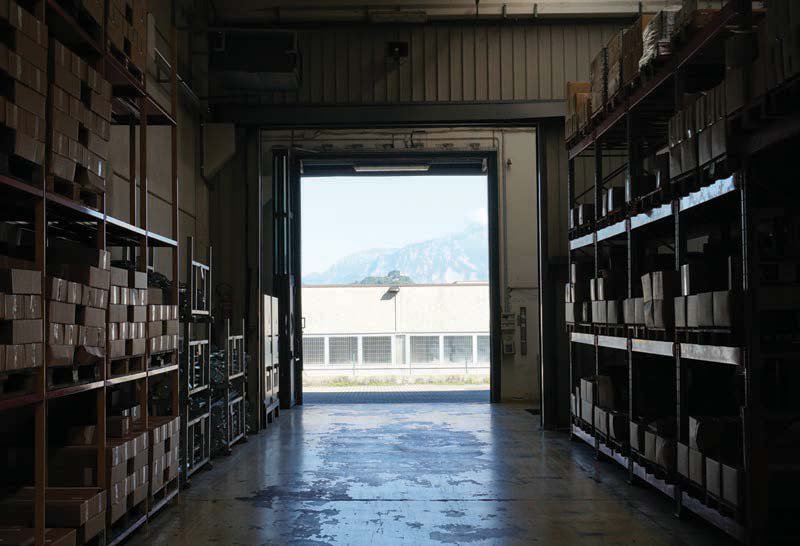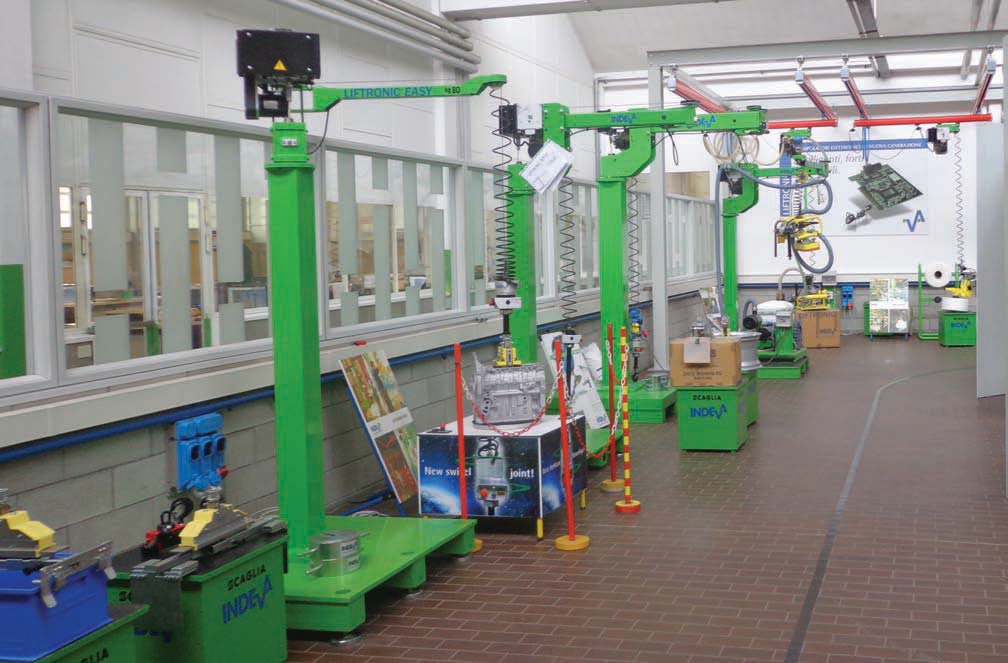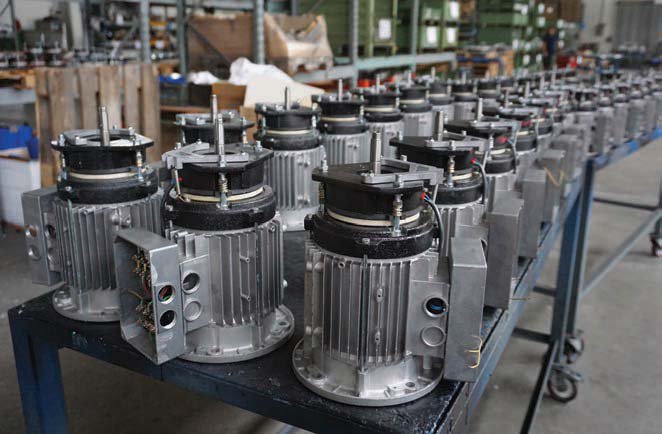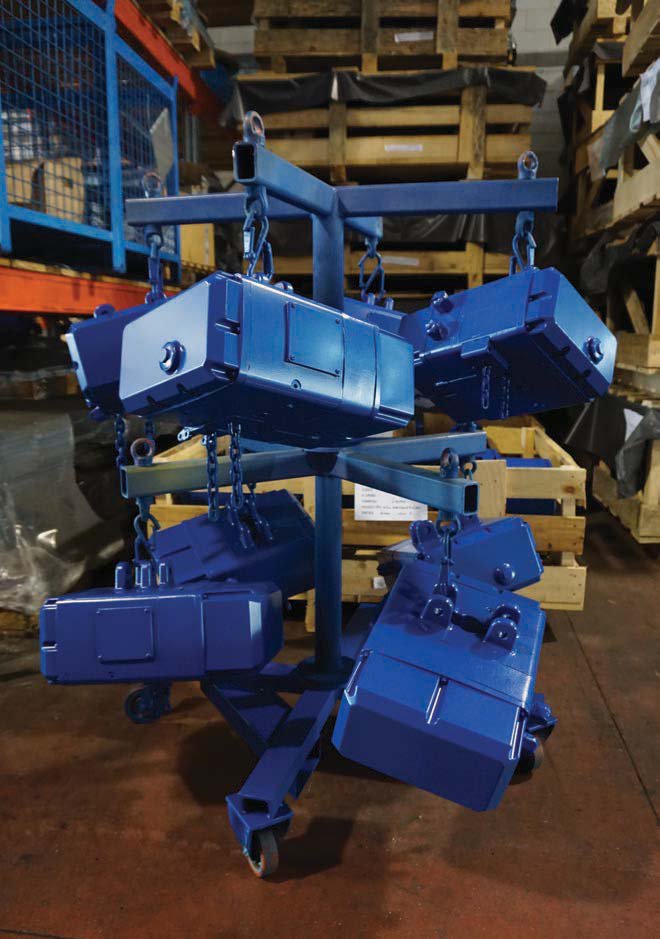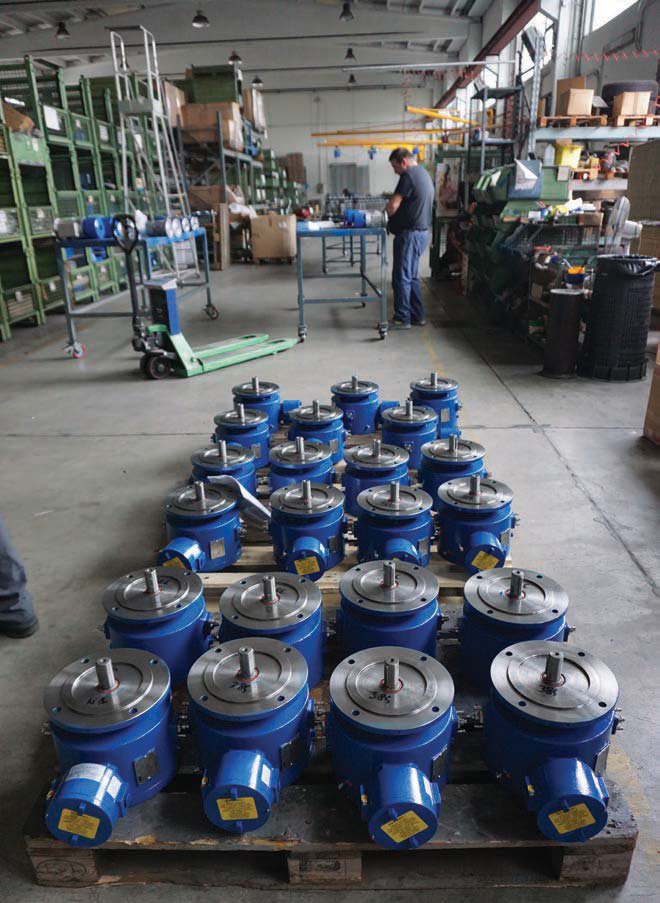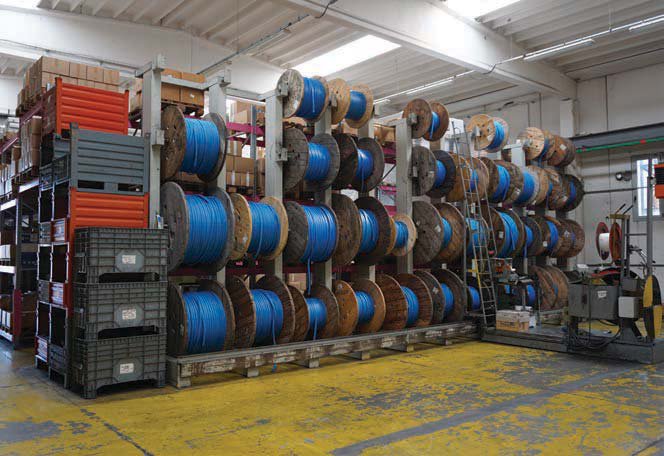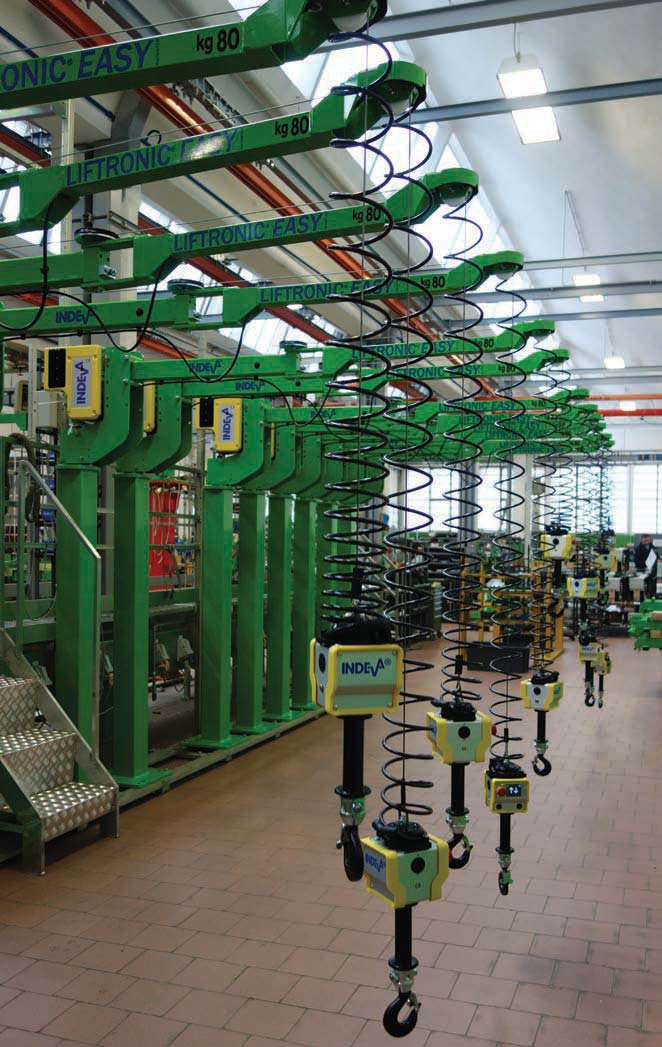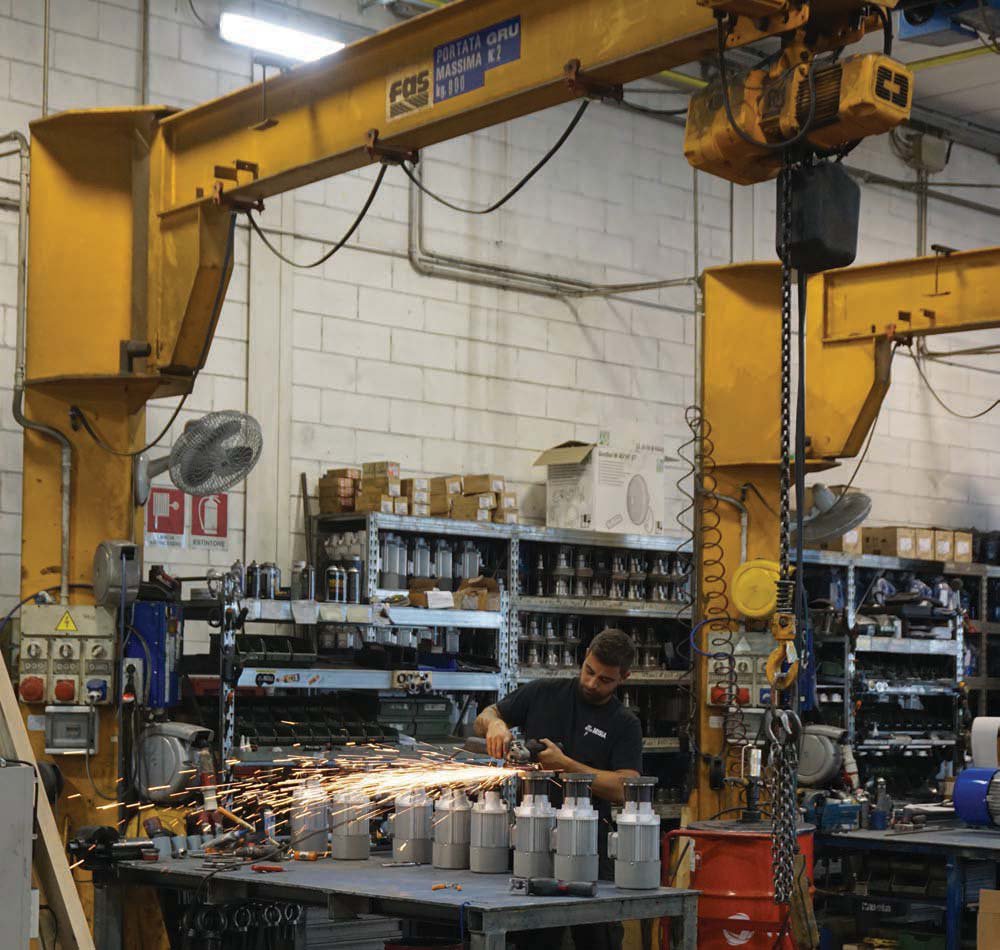Expert market
10 December 2018The Italian crane market has a large number of independent manufacturers offering high-quality technology. With a new government elected earlier this year, Daniel Searle visited companies in the Milan region to discuss the market.
There are around 50 manufacturers in Italy who can make a 200t crane, explains Aldo Carozzi at Misia. Yet, he adds, there are only two large companies active in the market—including Misia—with every other company surviving by producing, typically, four or five cranes a year. Italy has a history of mechanical and engineering know-how, and this manifests itself in what is an unusual, if not unique, crane industry in the country, incorporating a large number of smalland medium-sized manufacturers of bridge cranes.
“There’s a very good mechanics industry in Italy,” says Carozzi. “Which makes it easy to find specialised suppliers concerning any type of lifting devices.”
And outside of Italy, the export market is continuing to prove fruitful. “There are lots of export opportunities for Italian manufacturers because of our very skilled workers and good productivity,” says Carozzi. “While many smaller hoist manufacturers focus on keeping prices low, Misia has been trying since its origin to achieve the highest quality while keeping low prices.”
Andrea Paone, managing director at Coel Motori, also highlights the distinct nature of Italian industry: “The Italian hoist market is unique in the world. There are many small manufacturers, most of whom purchase ready-prepared components and just build the structures and assemble them. “The future of the Italian market is in producing small numbers of high-tech products. We don’t have the labour and management costs for massive production.
“Our goal is to keep a high level of knowledge amongst everyone at our company. Not many companies can produce small number of specialised products, but it’s the only way.” This approach is also important when taking a wider perspective, says Paone, who has a clear vision for Coel, and for the future of manufacturing. “People used to have the skills to repair things,” he says. “Now, products are designed to be disposable. That isn’t sustainable—we want to develop products that will last.”
Indeva, a manufacturer of manipulators, also produces highlyspecialised products; each lifting attachment they manufacture is different and designed for the specific lifting job required by each customer. The domestic market is doing well, says managing director Stefano Scaglia—thanks in part to a programme introduced by the previous Italian government designed to encourage investments of certain types.
“The Italian market began doing much better last year,” says Scaglia. “The government programme encouraged investments that had interests in areas like digitalisation and Industry 4.0. This was good for us as it prompted a lot of investment.” The programme may or may not continue under the new government, says Scaglia, but, “We haven’t seen much from them yet.”
With or without the programme, the Italian market is large, and the export market for Italian companies is even larger, says Scaglia. “We sell mostly to Europe, through our subsidiaries, although we are also selling in the US and China, through our subsidiary south of Shanghai. We have recently started selling to Brazil, where Scania placed an order for a large number of manipulators for its new factory. Mexico and Brazil are the two main markets for us in the Americas.
“Indeva is one of the most important manufacturers in automation equipment. We supply a wide range of industries: mechanical, mechatronic, industrial, automotive, and also traditional businesses such as fashion design.” In Lecco, not far from Milan, By Carpel supply their customers from a warehouse of power supply cables for hoists. The company has seen positive change in the Italian market over the last two years, says Ilaria Bonacina.
“The economic situation is complicated but last year was good,” says Bonacina. “We have some new plans, and we had a good turnover. Our customers are producing a lot for export, and we hope the economic plan will continue to encourage growth.
“Since 2009–10 there had been financial uncertainty in many countries, with lots of measures such as price management taking place. Prior to 2010, the market was much stronger. But, we are very happy overall. Cranes made in Italy are in a good position; they are exported to Europe and beyond. “In 2017 and 2018 we saw positive change, and that was helped by the government’s initiative that encouraged companies to invest in new technology and products. Although we are now standing and waiting to see what happens next.” THE FULL SPECTRUM
During the week spent in Italy, I visited a range of companies from across the hoist industry, to ensure a broader overview of the sector. Misia produce hoists; Indeva manufacture manipulators; Coel produce hoist drives, brake motors and control pendants; and By Carpel supply their customers with cables for hoist power supplies.
By Carpel will celebrate 50 years in business in 2019. It’s a big achievement, says Bonacina: “We are optimistic that we can continue to develop our company, to consolidate our figures and also our position in the world market.
“Last but not least, the anniversary is very important for a ‘little company’ as we are, and also for the founder Vittorio Bonacina, who has dedicated his life to his company. And now with the new generation, and with all the employees, the organisation can continue to grow the By Carpel brand.”
Part of the key to the company’s success is its prompt delivery of products to its customers, says Bonacina. “We have our own catalogue of products, and we can also provide customised systems, all for cranes. We can normally deliver products within 1–2 days to customers in Italy, and even for customers based further afield, it only takes us 1–3 days to process the order.
It’s quicker for our older customers because we know what they want. “We have lots of spare parts in stock, for example cables from 1–1,000m long. “We have eight members of staff, which is not so many but we are very flexible. We sell to around 80 countries around the worl; we have long relationships with many of our customers, as well as some spot customers.”
By Carpel’s customers are primarily crane constructors and maintenance companies; they use By Carpel’s components to fit onto cranes. The products are composed of materials and components made in Italy, and use the latest technologies.
“We have upgraded our IT systems so we now use 3D drawing software rather than 2D,” says Bonacina. “We look at the potential uses of different materials, different mounting systems, and so forth. We also offer a range of options such as different shapes, materials, colours, and to meet various different standards—as well as giving guidance on standards. We always aim to respond to our customers’ queries straight away.”
The company can offer a DNV certification, and also an ATEX certification, which is of particular use for the company’s customers working in sectors such as ports, steel mills, mines, oil and gas, and the food sector, where stainless steel equipment is required. And, from last July, the company gained AEC certification, for the Russian markets—both for direct exports and for customers in nearby countries such as Lithuania, who then sell the completed cranes into Russia.
EXPANSION IN BERGAMO
Indeva first moved into the lifting industry with mechanical manipulators for handling yarn spools for the textile industry; the process of the operator lifting them manually made them unsuitable for the machines, and so an alternative solution was required.
That was in 1975; the company then moved into other industries, before adding its first pneumatic manipulators in 1990 and, in 2000, its flagship Liftronic Easy series. Indeva is now onto Version 6 of the Liftronic Easy, with upgrades designed to make it more intelligent and user-friendly.
The company’s expansion is not restricted to its products; Indeva is currently in the process of planning a move to a newly-built, larger factory closer to the centre of Bergamo.
“The new facility will provide more space, better machinery, and better organisation and material flow,” says Stefano Scaglia. “It’s an opportunity for a complete renovation of the production process, to add more efficiency, to provide faster responses to customers, and to improve the overall process.”
The new facility will be physically larger, at around 15,000 sq m, giving scope for a 30% increase in production capacity. There’s also the possibility of further expansion, says Scaglia, adding that the company’s current facility is the oldest in the area, having been built in 1937. As well as the new machinery and production processes planned for the new facility, the company is also working on improving its IT systems.
“We’re changing from older systems to new, modern ones,” says Scaglia. “We’ve started the process to determine which IT system is best for each step of our business. “We provide a service to multi-national customers, with uniform service and support, and supply a uniform product, with controlled quality and centralised production. We believe that keeping centralised design and concept is an advantage, due to economies of scale, and keeping all the experience from our projects around the world in one place.
“And to do this efficiently, we are investing heavily in IT, including new communication technology that improves our methodology of communication. It allows for an efficient flow of information covering product specifications, applications, and so forth.”
As well as investigating different IT systems, Indeva is also considering working with an external consultant to look at material flow in the production process, to determine the best equipment for each step. There are the benefits of bespoke equipment to consider, which help to ensure quality, repeatability, reliability, and to optimise response time.
Communication with customers can also be enhanced, says Scaglia: “We can interconnect with customers’ equipment, to schedule maintenance, to see what tasks the machines are performing, and equally customers can connect to the management system.”
INDIVIDUAL HANDLING
Indeva’s manipulators typically comprise one the company’s standard columns with a bespoke lifting and handling attachment. “We can start with a standard model and then adapt it to suit the individual application and the properties of the product being lifted, such as the weight, size, shape, if it is delicate, and so forth,” says Silvana Donati, marketing manager at the company.
The Liftronic Easy is produced with three different sizes of column, which is assembled together with the arm and the gripper tooling. A range of heights and arm lengths are available, but as these are standard parts, they’re very reliable, says Donati. It’s the gripper tooling that provides the most differentiation between each system produced by Indeva; the tooling is produced for lifting and manoeuvring specific products in specific applications, and CAD is used to design the often very complex tooling. To ensure the tooling works in practice as well as in theory, customers send Indeva samples of the products they need to lift, so testing can be carried out at Indeva’s facility.
The company’s ability to produce highlybespoke systems is assisted by the control it has over its production process—the company manufactures around 70% of the components it uses, and uses a CNC system with laser to cut metal sheets to the exact shapes required.
The controls on each system—including the functions of the buttons on the control, and some safety features—are also selected to suit the individual application, based on the skills of the operator.
A further distinction is Indeva’s electronic manipulators, which is how the company differentiates itself, says Donati, adding that the electronic systems can make handling feel very natural.
The company still manufactures pneumatic systems too, though, as that is what many operators are used to using— during the visit to the factory we walk past a pneumatic lifting system set to be used by Lamborghini, for example.
The two technologies can complement each other, too; the company’s Liftronic Pro can offer electronic or pneumatic handling, while the hybrid Liftronic Air has electronic controls but pneumatic power, which makes it suitable for heavy loads. It can handle up to 360kg as standard, with higher capacities available.
The electronic system, though, enables a level of safety that can’t be delivered with pneumatics, says Donati, as well as providing other advantages. “It can prevent the tooling from jumping if the load falls, by adjusting automatically,” she says. “Operators often bypassed safety regulations with pneumatic systems, simply because those manipulators were so clunky that it became a burden, particularly for repetitive movements. Our electronic manipulators are like an extension of the human arm—there is no overtravel, inertia or resistance, and they are quicker and more efficient to use.
“Our electronic manipulators are Industry 4.0-ready, and can communicate with central management and other machines.” The latest innovation is a new toolhead, which has just been launched. The key advantage is that it is more modular; the swivel joint can be removed and an electric or pneumatic system plugged in. The swivel joint can then be added back in.
This offers more versatility, in that customers can buy a standard system to use with their own manipulator, while ensuring safety; whilst with conventional systems this set-up would result in a lack of communication from the arm to the manipulator, affecting safety, the new Indeva toolhead incorporates the company’s High Connect interface module, which connects electric or pneumatic cables. This enables the system to follow safety checks such as preventing lifting if the grippers do not have a secure grip of the load, for example. The toolhead also features a USB input for service staff to connect the system to a computer, to view the various diagnostic parameters.
LEAN PRODUCTION
At Coel, the manufacturing process of the company’s products—which include brake motors, the PMT range of hoist drives, and ATEX control pendants—was modernised to add a number of benefits, says Paone. “We replaced the production line with moving islands,” says Paone. “This provides a lean, very fast approach. Each island can move into the different sectors of the factory where the different parts of the production process take place.
“This means that one small team oversees the whole production process of the product, and each person has the specialised skills to control the process, and understands the whole production process.
“This process also provides built-in quality control; the knowledge of each person contributes to the quality control. All the machining and assembling of our products take place in our factory—this is important to us.”
As well as increasing the overall knowledge of the team at Coel, the process also improves the speed with which the company can respond to orders. There are other measures that help to make their response time faster, too, says Paone:
“We design our products to use many of the same components, which reduces the number of component types we need. We have a large stock of raw materials, and some machine components, so our reaction times are very fast. Our standard delivery time is around 30 days, but we offer an express service to turn orders around within one week.”
The products produced by Coel are focused on supplying the ATEX market, says Paone, which means there are more opportunities in export markets than in the domestic market.
“We supply markets including mining, offshore, and anywhere with a dusty environment,” says Paone. “We sell our equipment to the Far East, northern Europe, and North America—we have recently introduced CSA certification for the US, we have a distributor there, and we are expanding the number of agents we have across the US and Canada.” The company offers a wide product range, the majority of which are suitable for hoists. It includes brake motors, brakes, and limit switches and pendant stations for hazardous areas. And Coel specialises in using its engineering know-how to produce bespoke solutions through modifications to its standard product range:
“Our typical client asks for something special—either customised, or more suitable for a special application,” says Paone. “Our PMT hoist drive is unique on the market. It has a parallel shaft gearbox, for drum mounting on wire rope hoists. And it’s completely modular; the customer can choose the type of motor to make it suitable for the requirements of low-temperature or hazardous areas. The output shaft and flange are modular, so they can be easily replaced.
“There is nothing similar to our Xtouch flameproof pendants on the market. Explosion-proof pendants exist, but not with a solid body. The Xtouch has a very hard structure, but is light. It’s just been launched in North America, with a dedicated certificate.
“We also produce explosion-proof rotary limit switches, which are normally cast-iron but are also available in stainless steel. A typical customer will buy a relatively small number of each highly-specialised product—perhaps around five or ten rotary limit switches, for example.
“Our R&D team focuses in particular on sectors that have special requirements and need specialised products.” This approach has helped Coel to grow even when the market is static, he adds: “We can still grow and improve through the new products we develop. We can offer our customers new solutions.” CUSTOMISED SOLUTIONS
Misia is producing an increasing number of specialised hoists, with more customisation. Although around 80% of the market in Italy is for standard hoists, the future is in specialised hoists for specific applications, rather than aiming to sell standard hoists, says Carozzi. “We provide specialised hoists for mines, dams, hydropower plants, towers for smoke treatment, storage, wind power. We offer hoists with long lifting heights, with a high level of protection and true vertical lifts. A few weeks ago we supplied some 96m, 16t hoists with frequency inverter, for example.”
Misia also offers optional design extras such as ‘True Vertical Lift’, which is achieved through double reeving and prevent the hook from moving sideways during a lift. Even though the company produces specialised hoists, it is flexible enough, and has enough resources, to respond quickly to customer orders, says Carozzi: “We provide very quick deliveries—customers typically want their order within a few days.” Misia has been manufacturing hoists for 35 years, says Carozzi, and around 75,000 of its hoists are currently in operation around the world.
“All of the production team are highly skilled, even though some are still young. All of our workers are not normal workers, they are almost technicians,” he explains, adding that this level of expertise helps with the production process.
Conical motors are still popular amongst Misia’s customers, even though cylindrical motors have the advantage of better protecting the brake, says Carozzi: “We used to expect that conical motors would loose popularity, because the market preferred cylindrical motors with inverters, but not so. Maybe one-third of our clients prefer conical motors, one-third prefer cylindrical motors, and the remaining don’t have a preference.”
Across the road from Misia’s facility is FAS, the Italian distributor for Kito, sister company of Misia. The chain hoists supplied by FAS include explosion-proof manual chain hoists; FAS modifies the Kito hoists to add bronze wheels and copper hooks for ATEX and EX PROOF applications.
Around 5,000 chain hoists a year leave FAS, mostly to the domestic market including major crane manufacturers the company also distributes JD Neuhaus hoists and Pewag chains. The company is one of the most important rope distributors in Italy, and has a wide range of products immediately available to customers.
